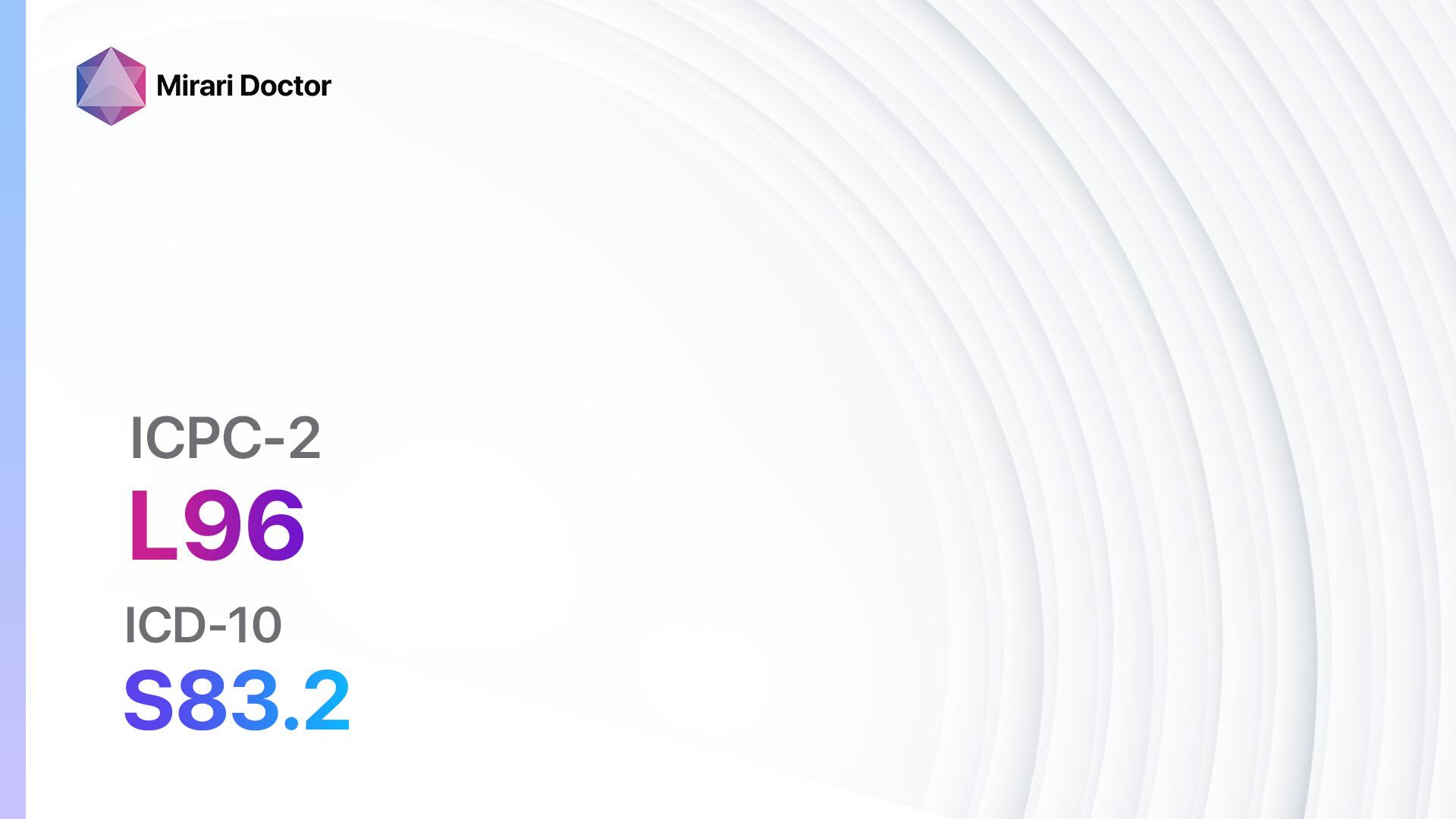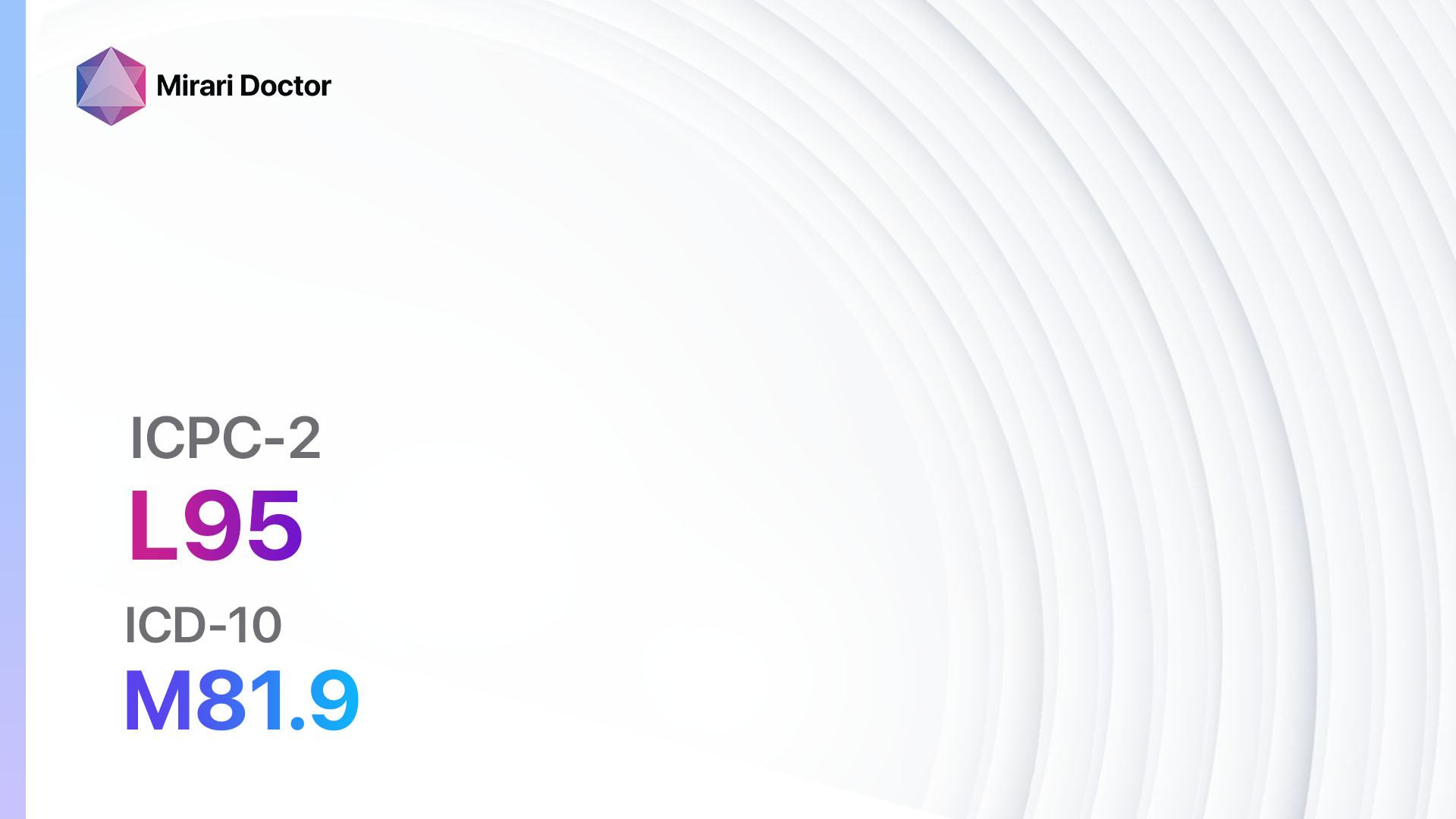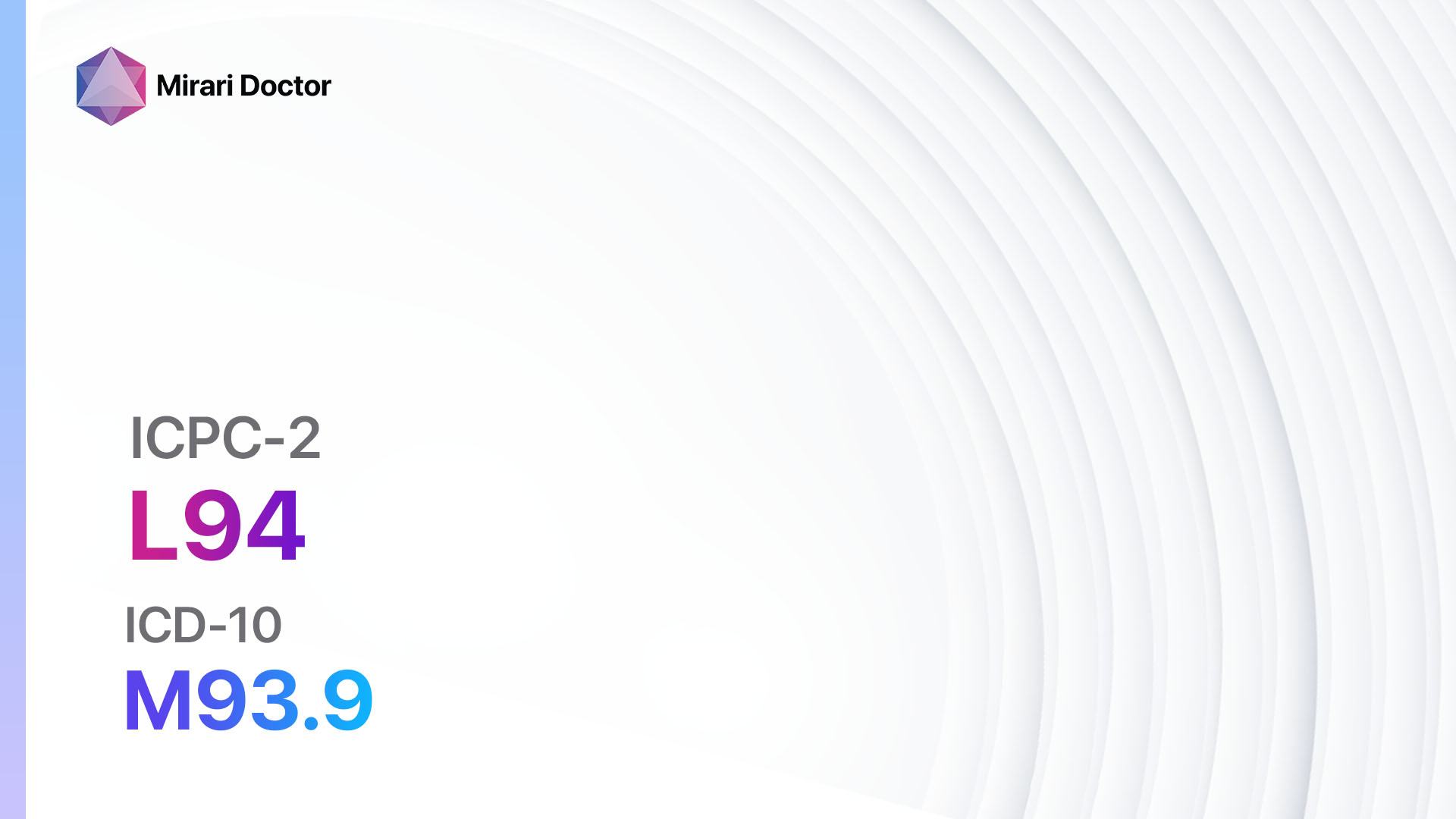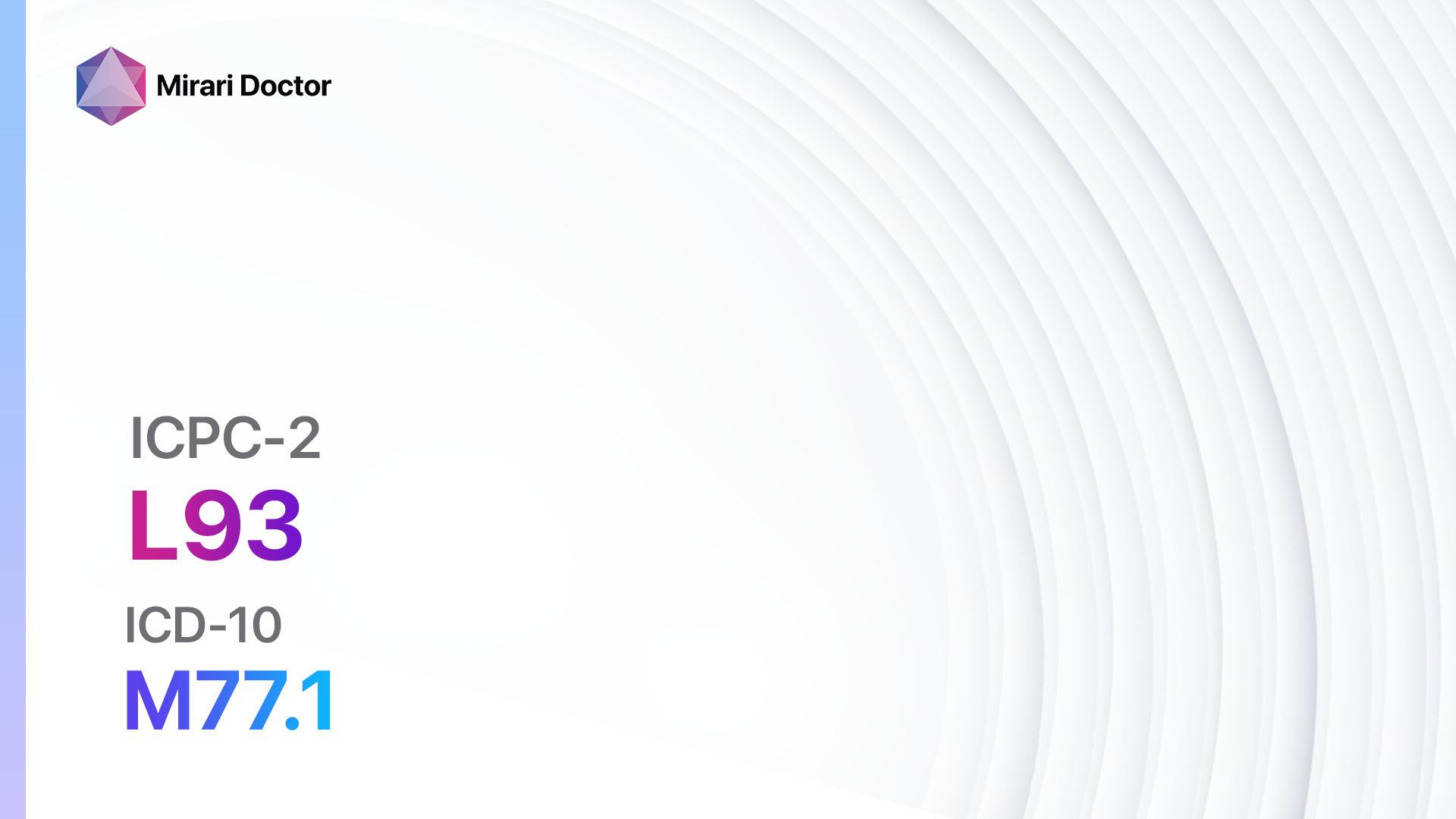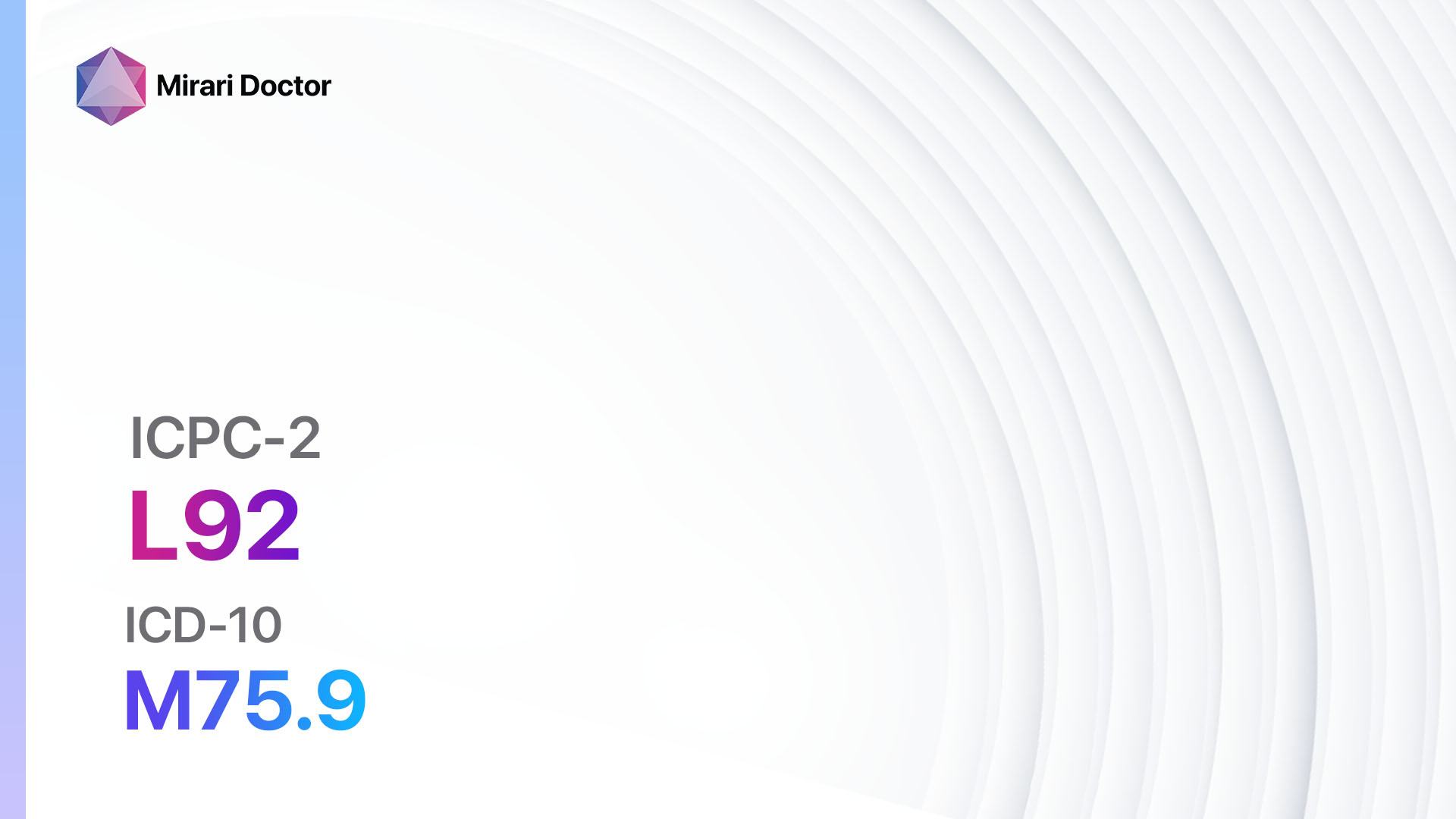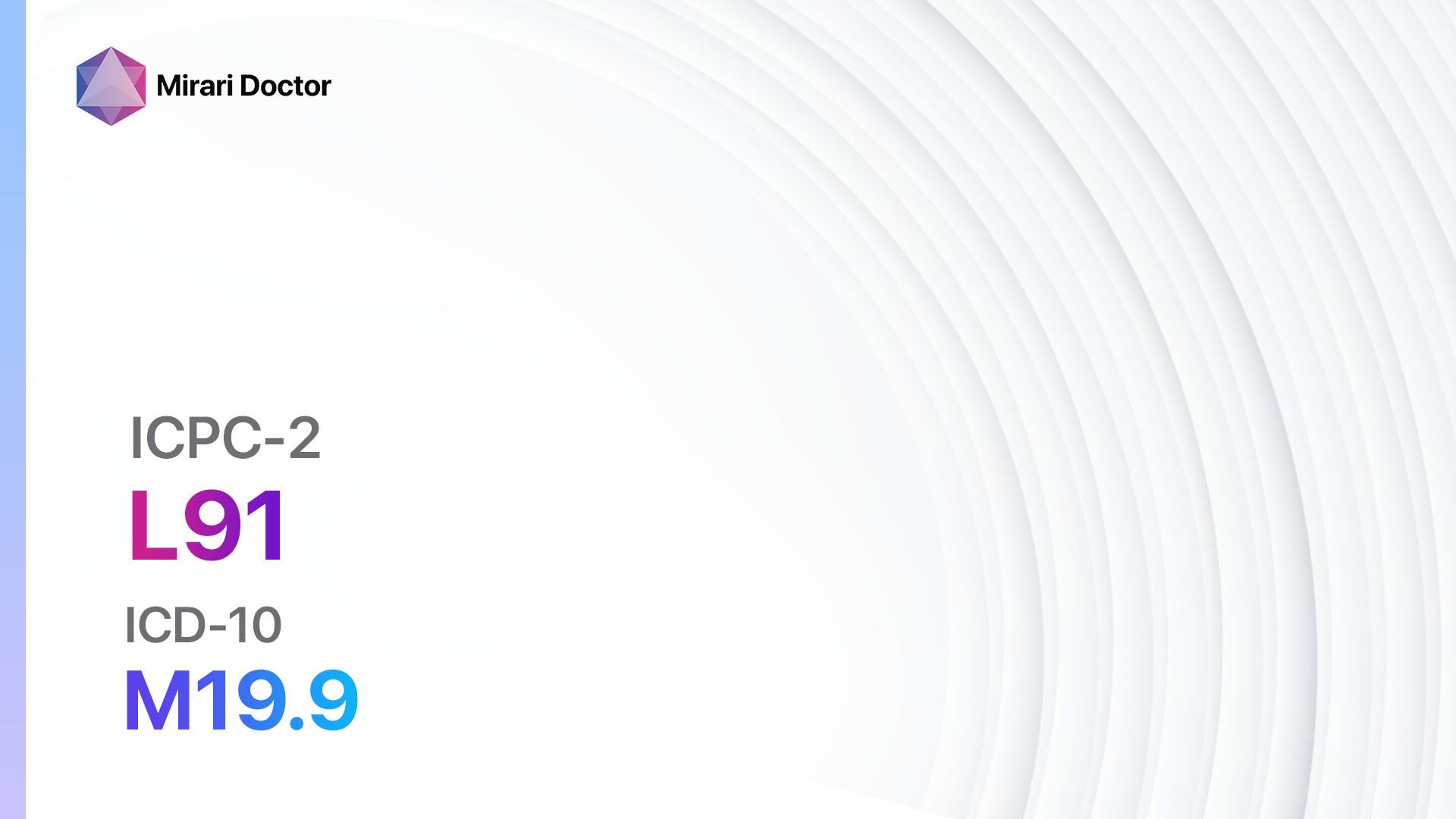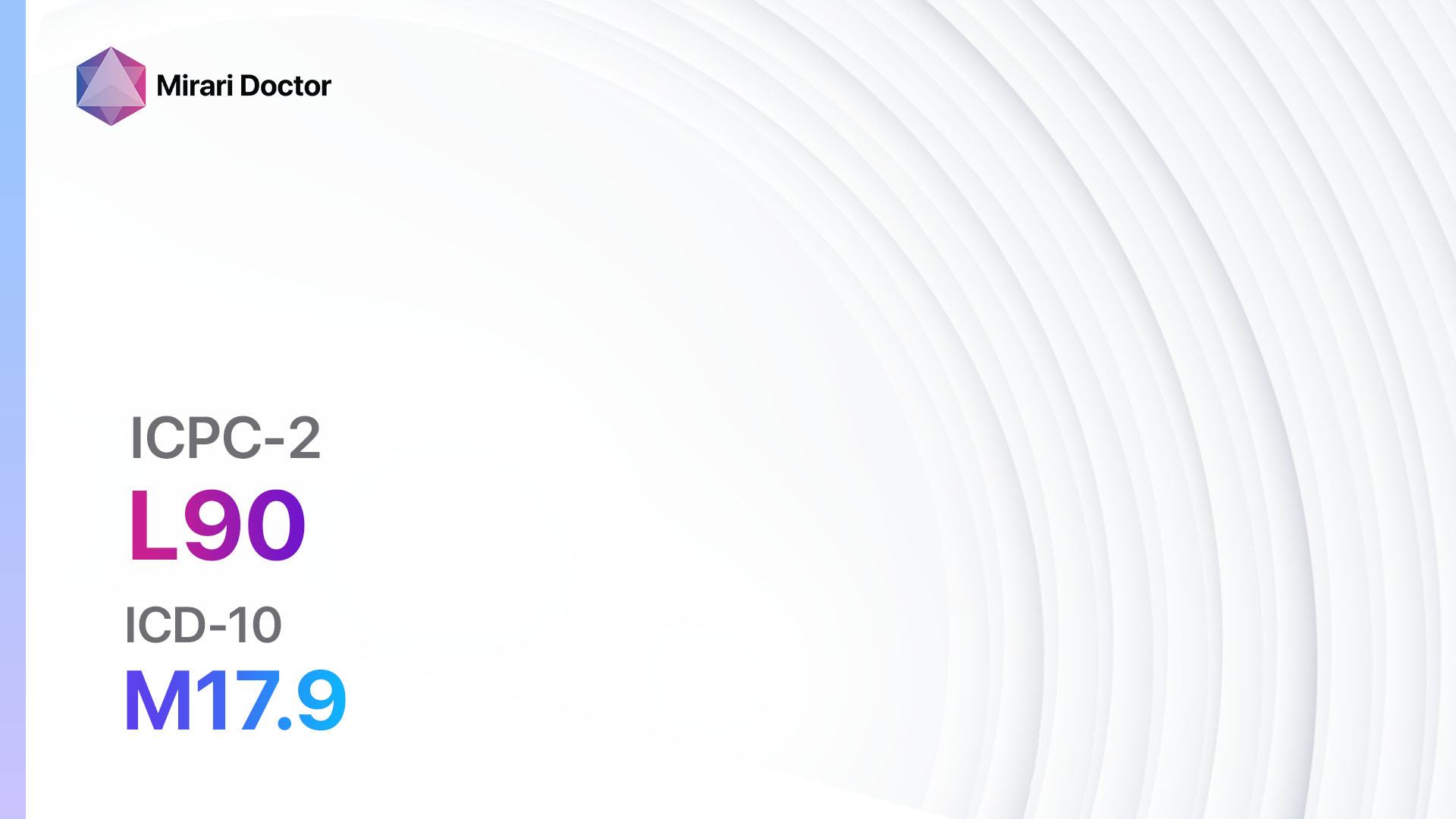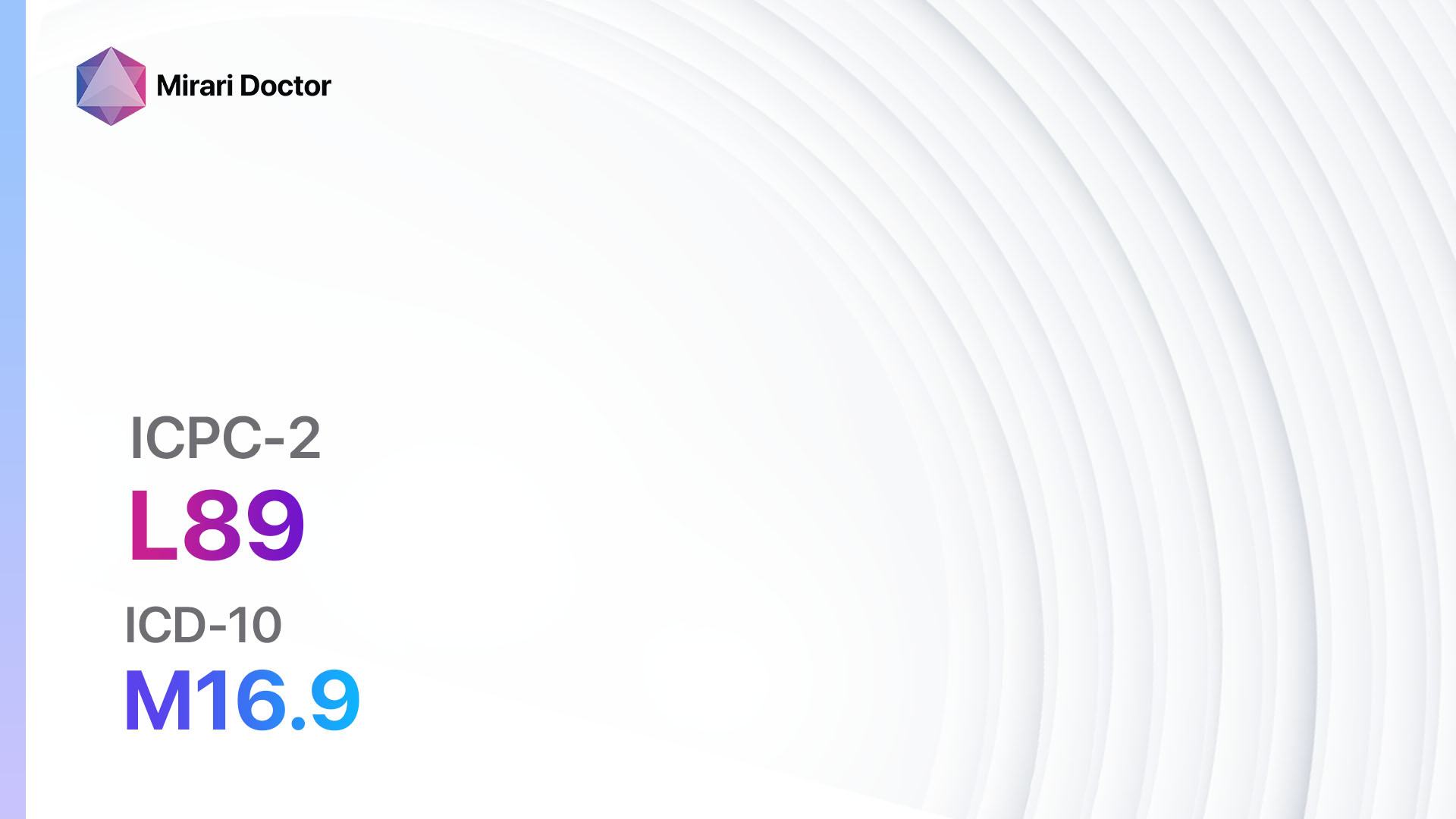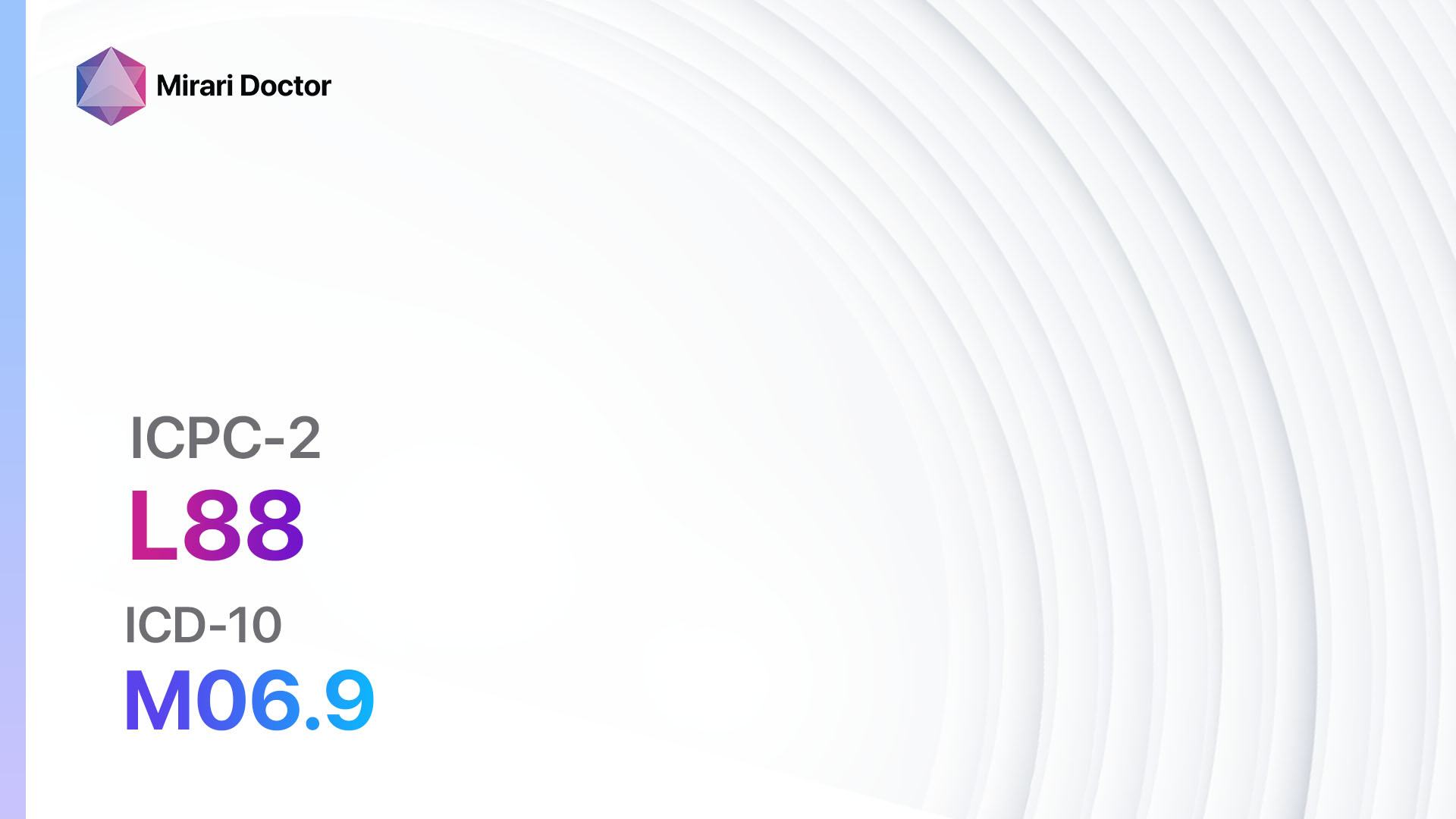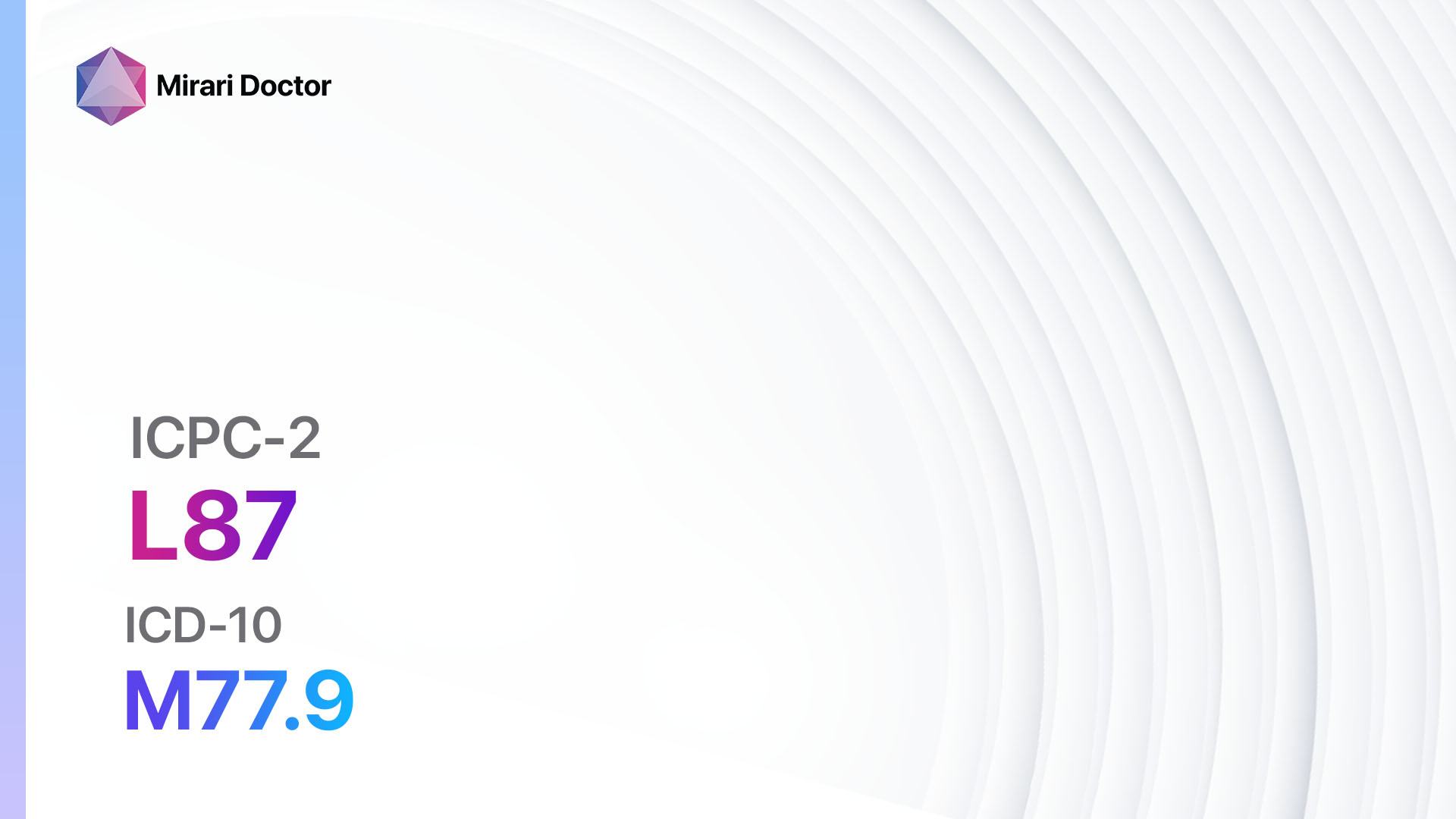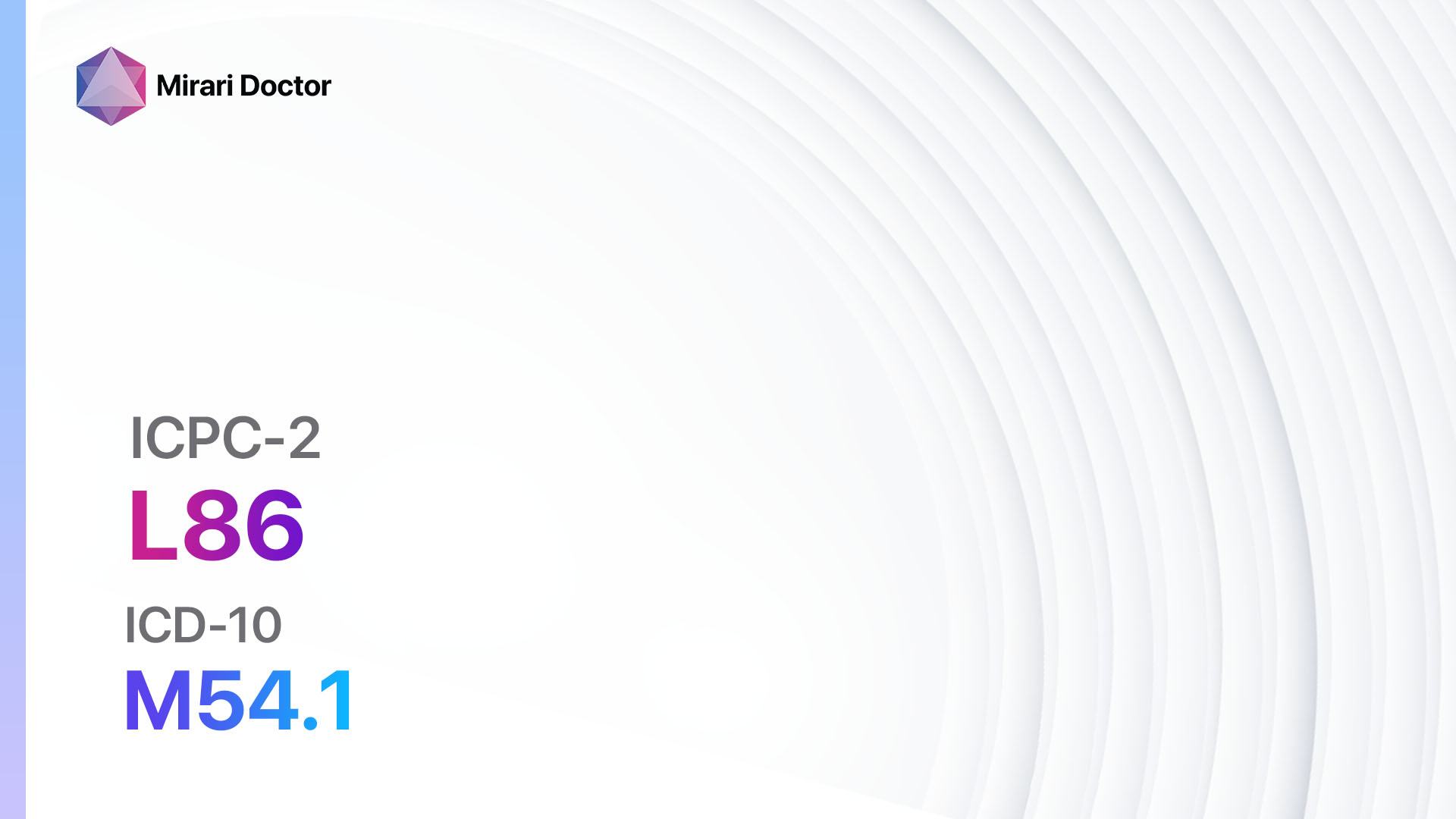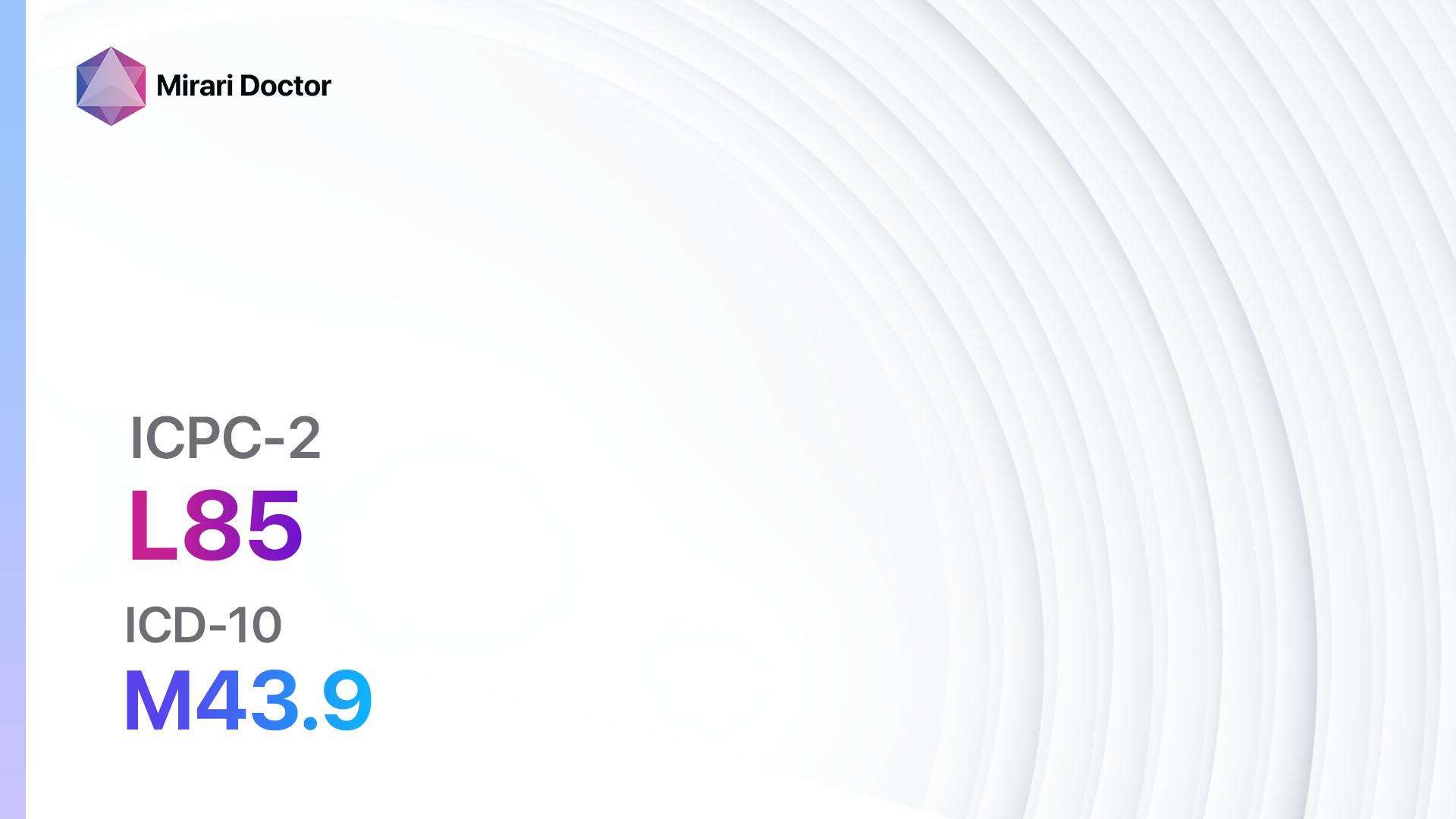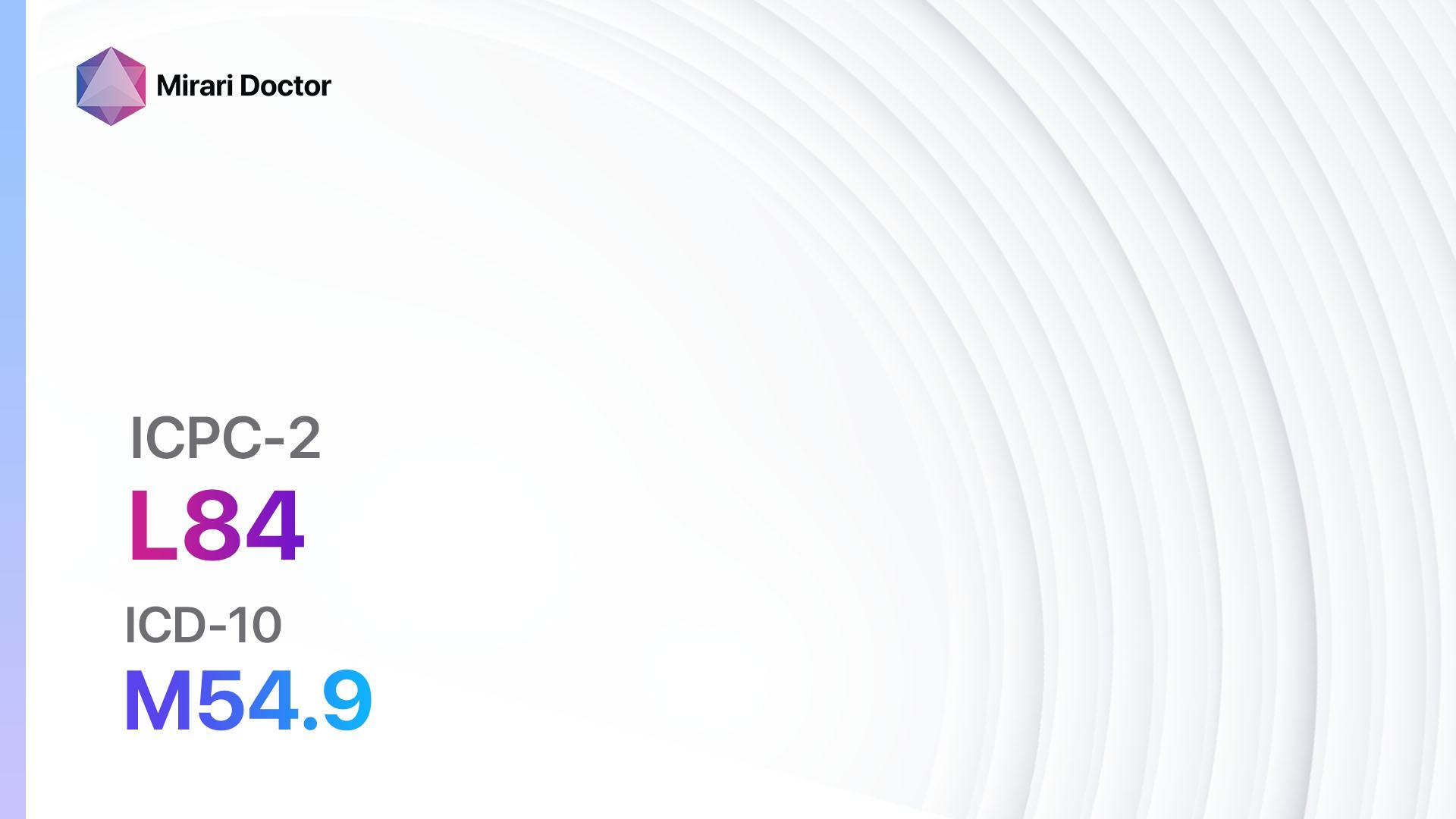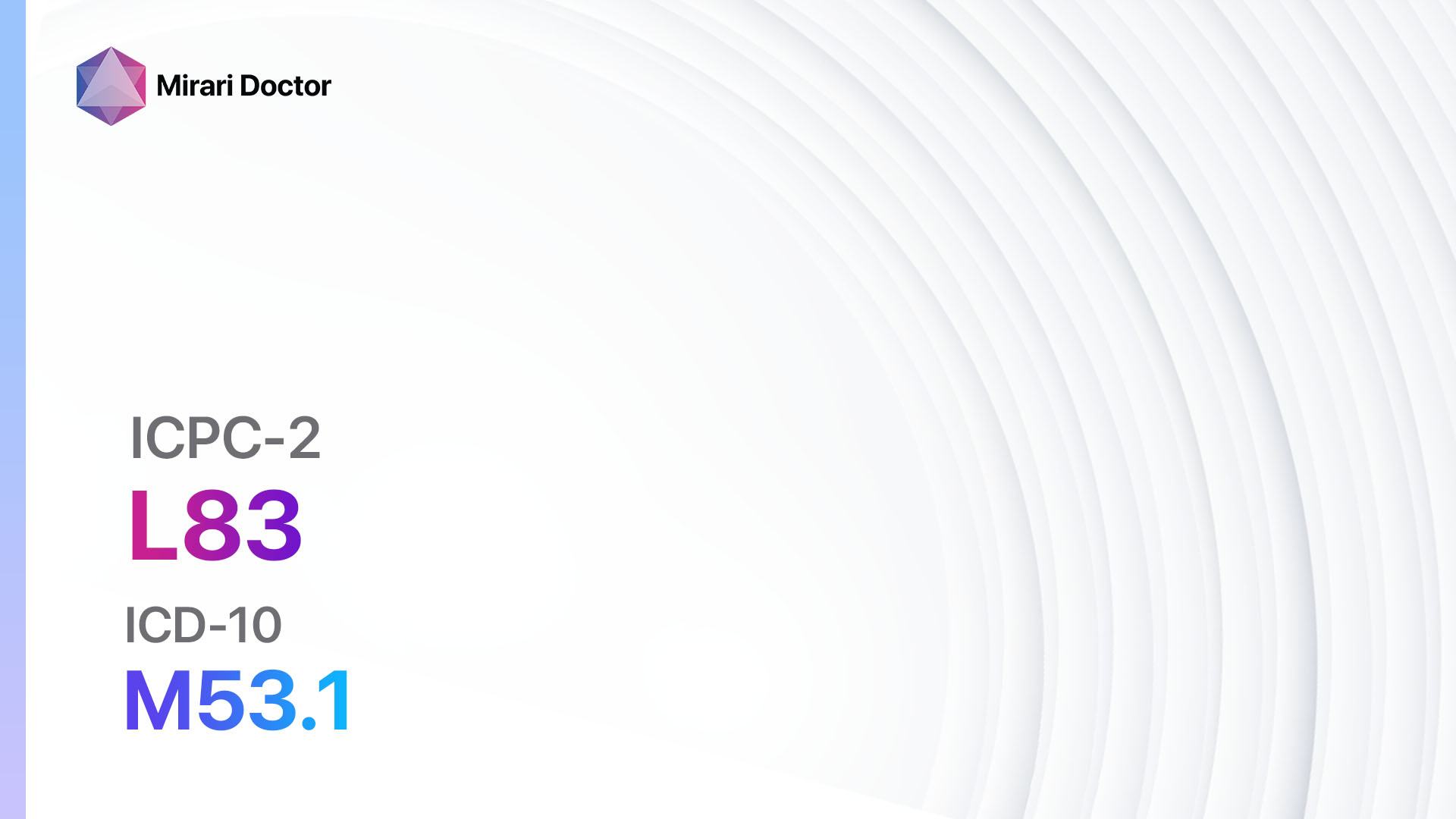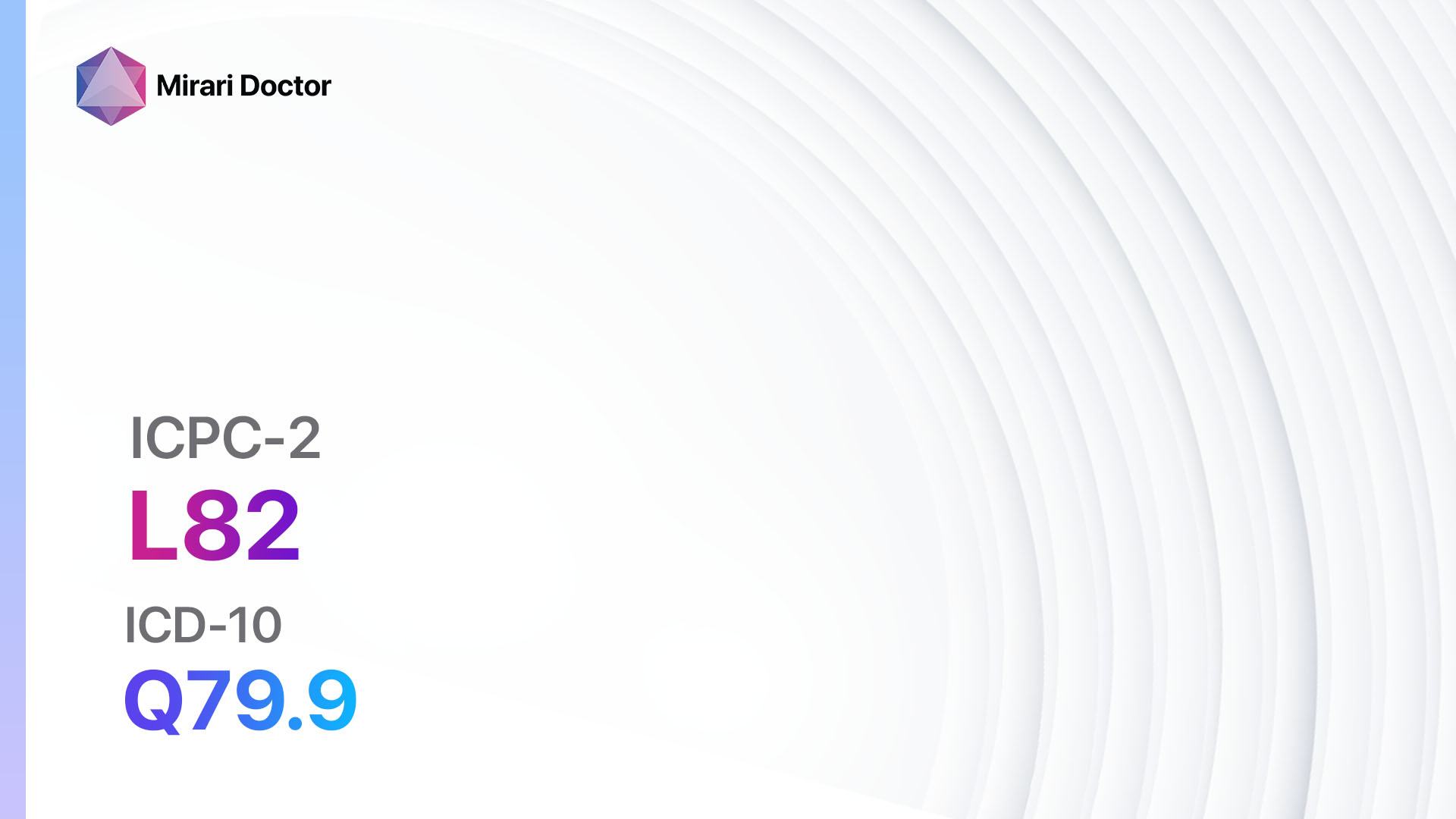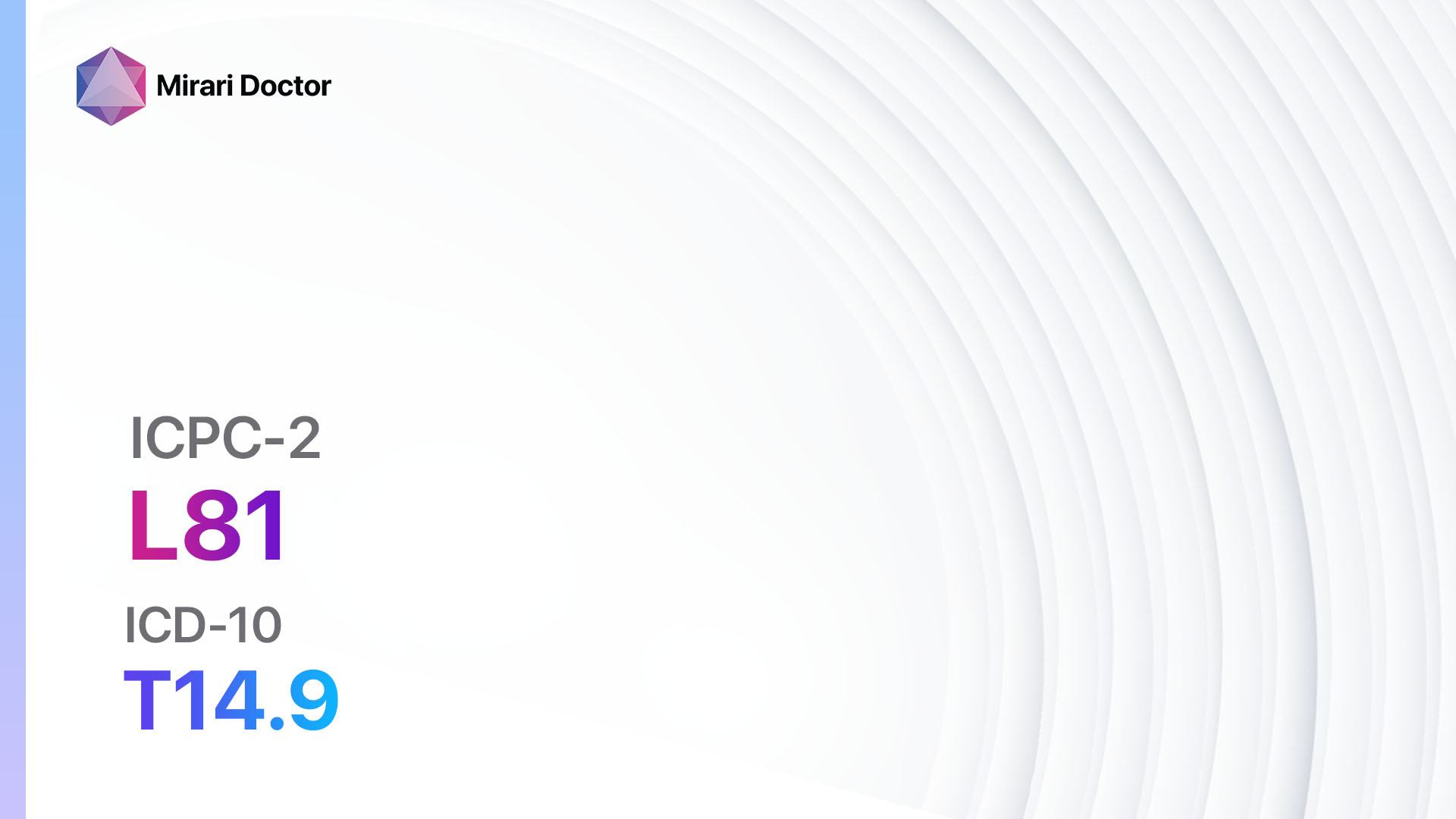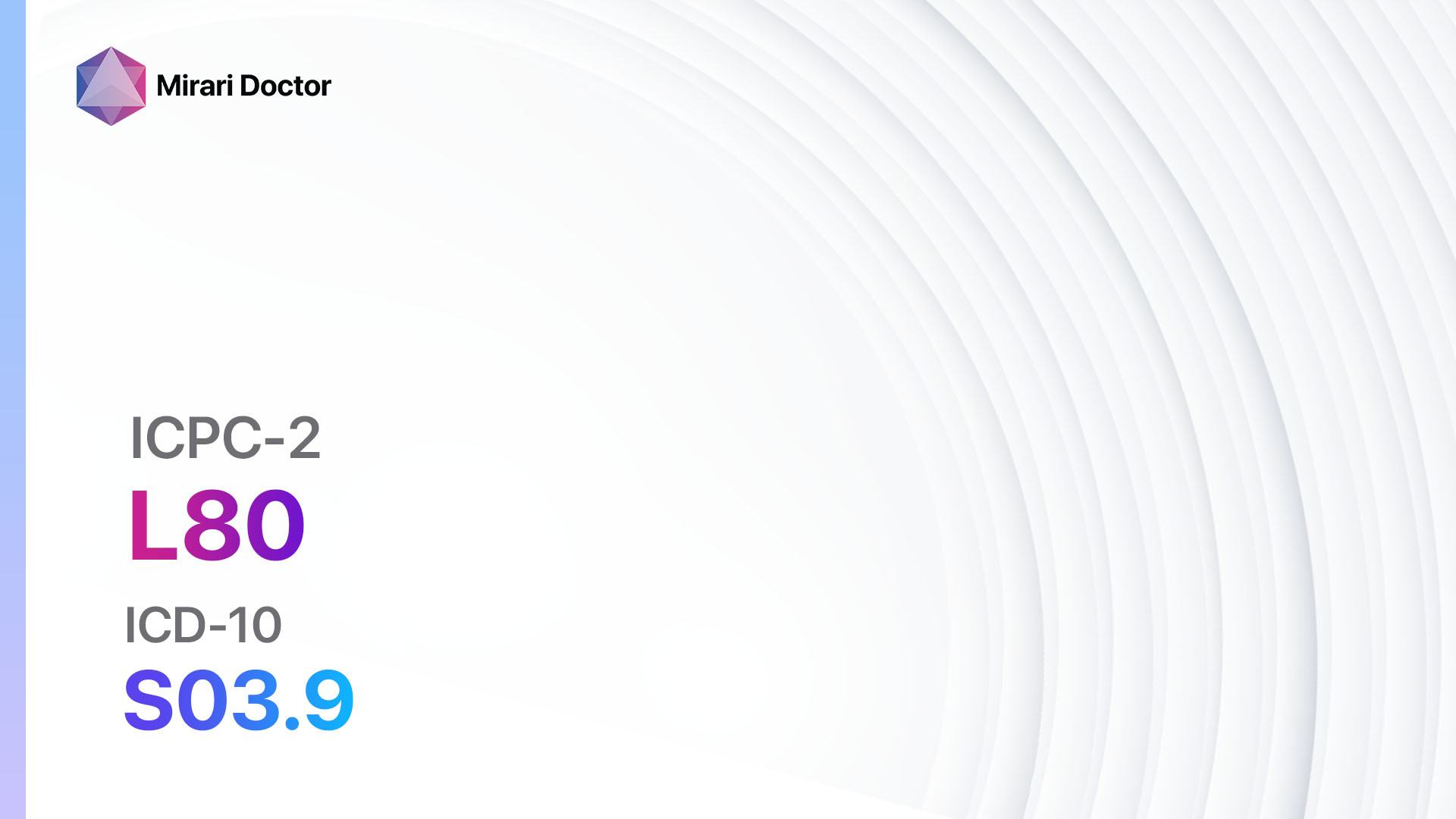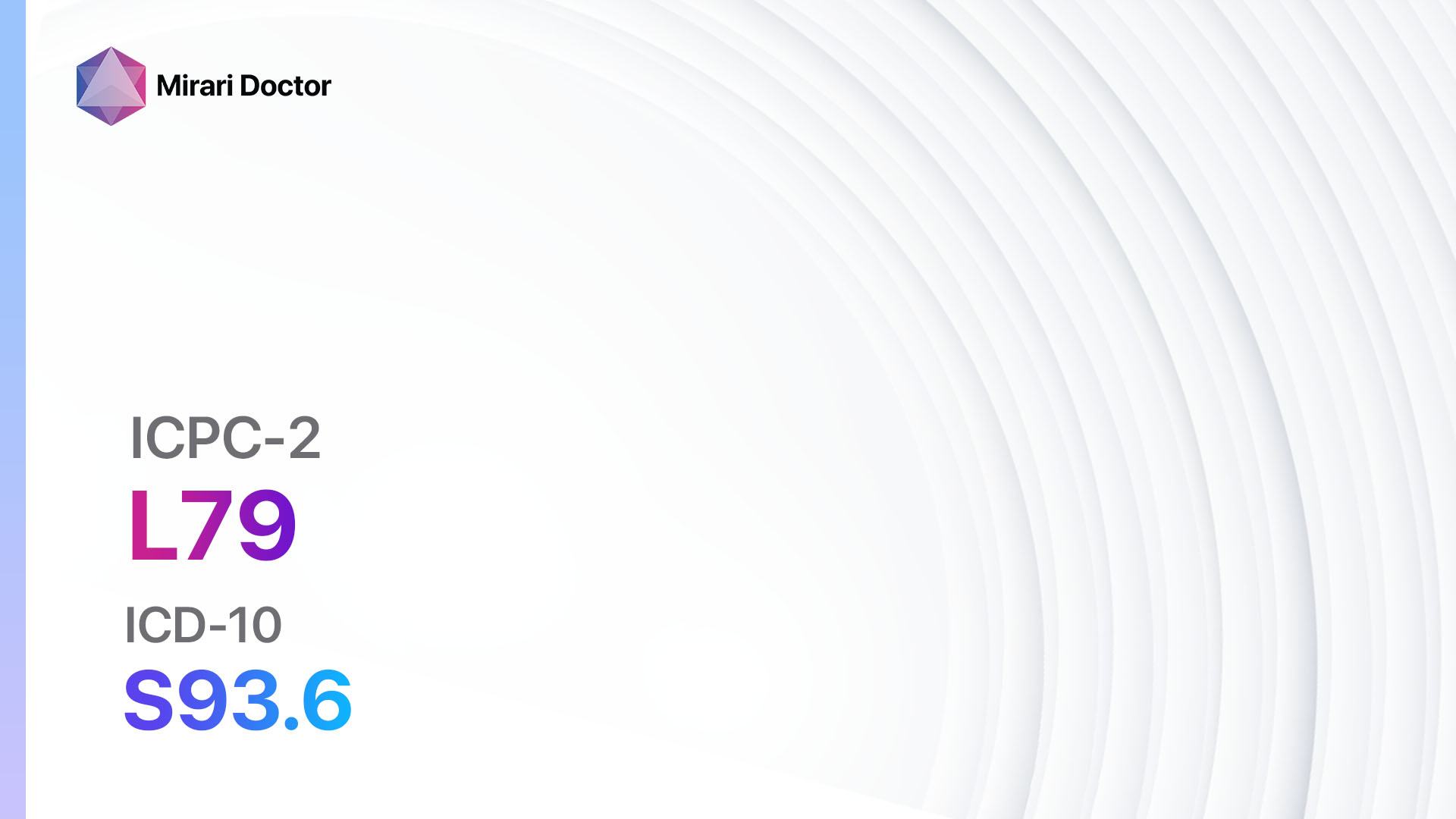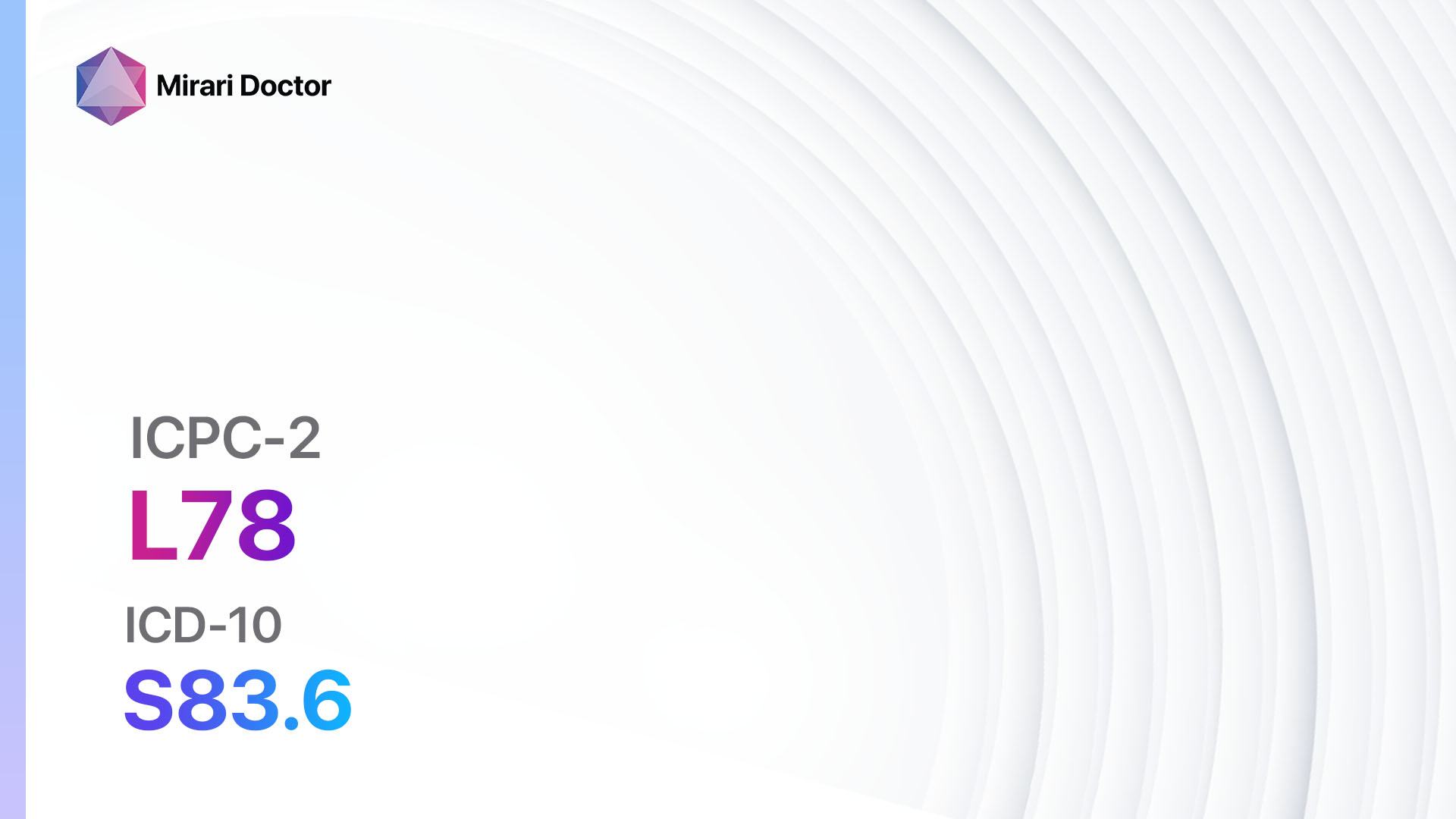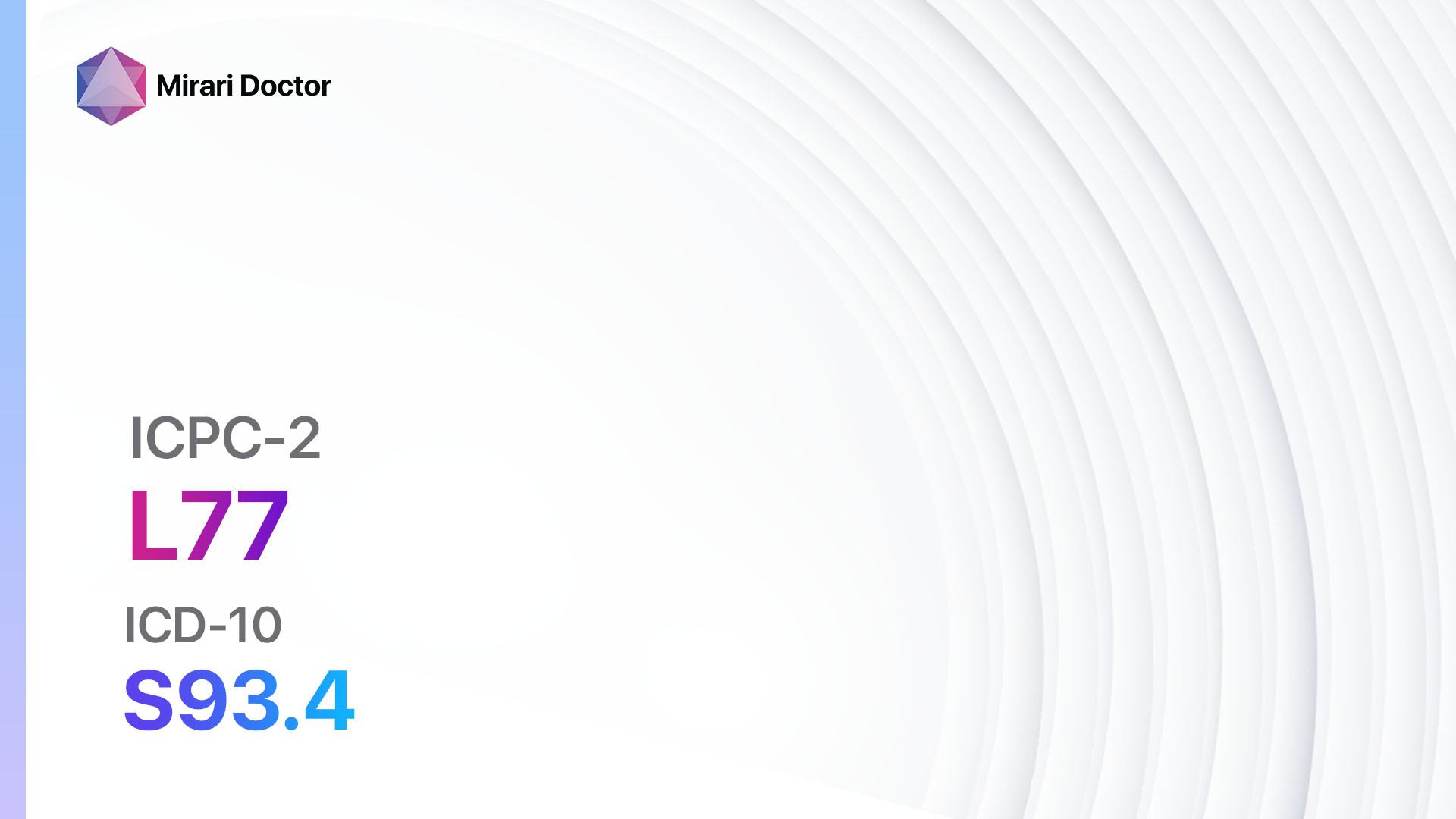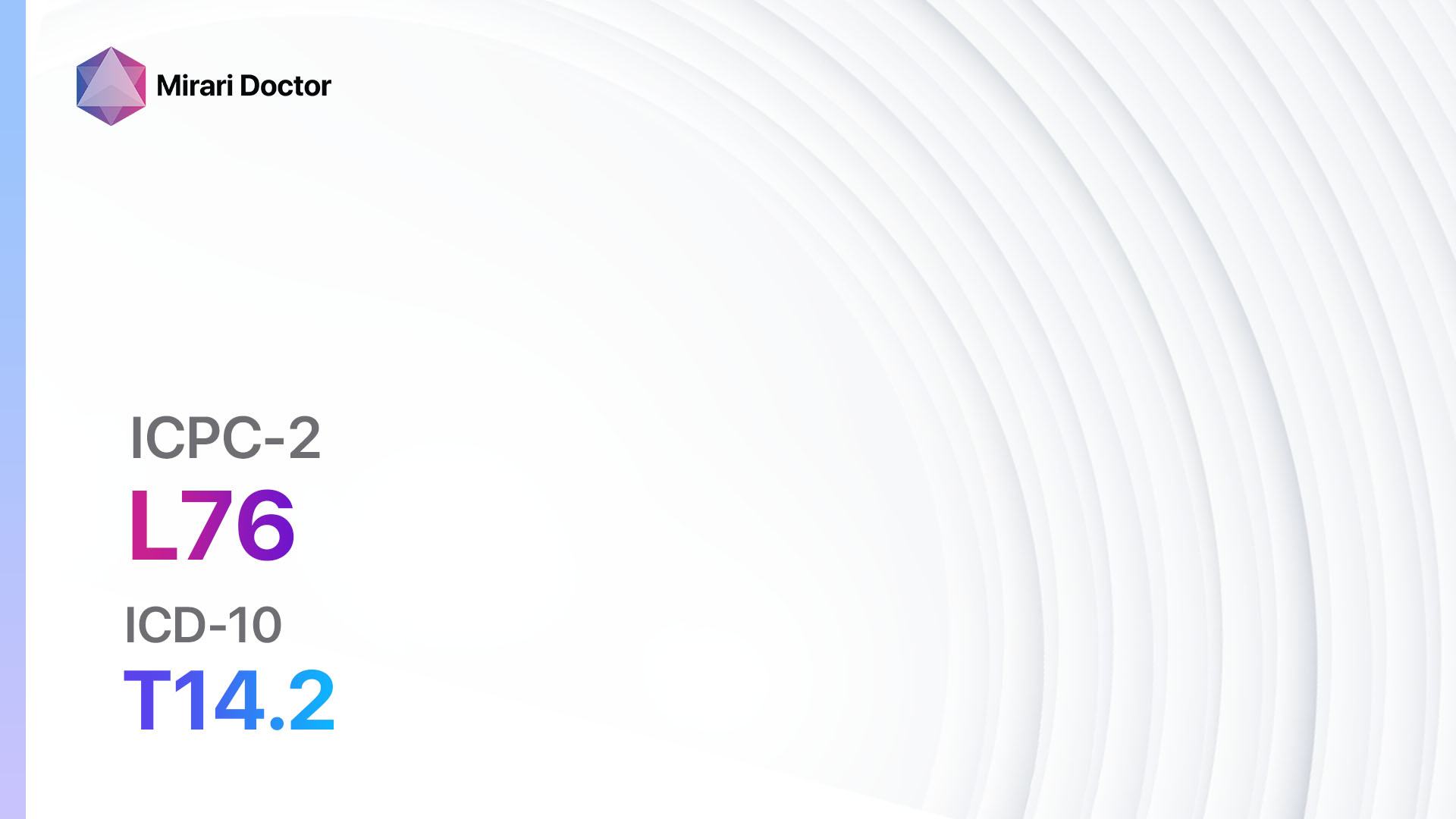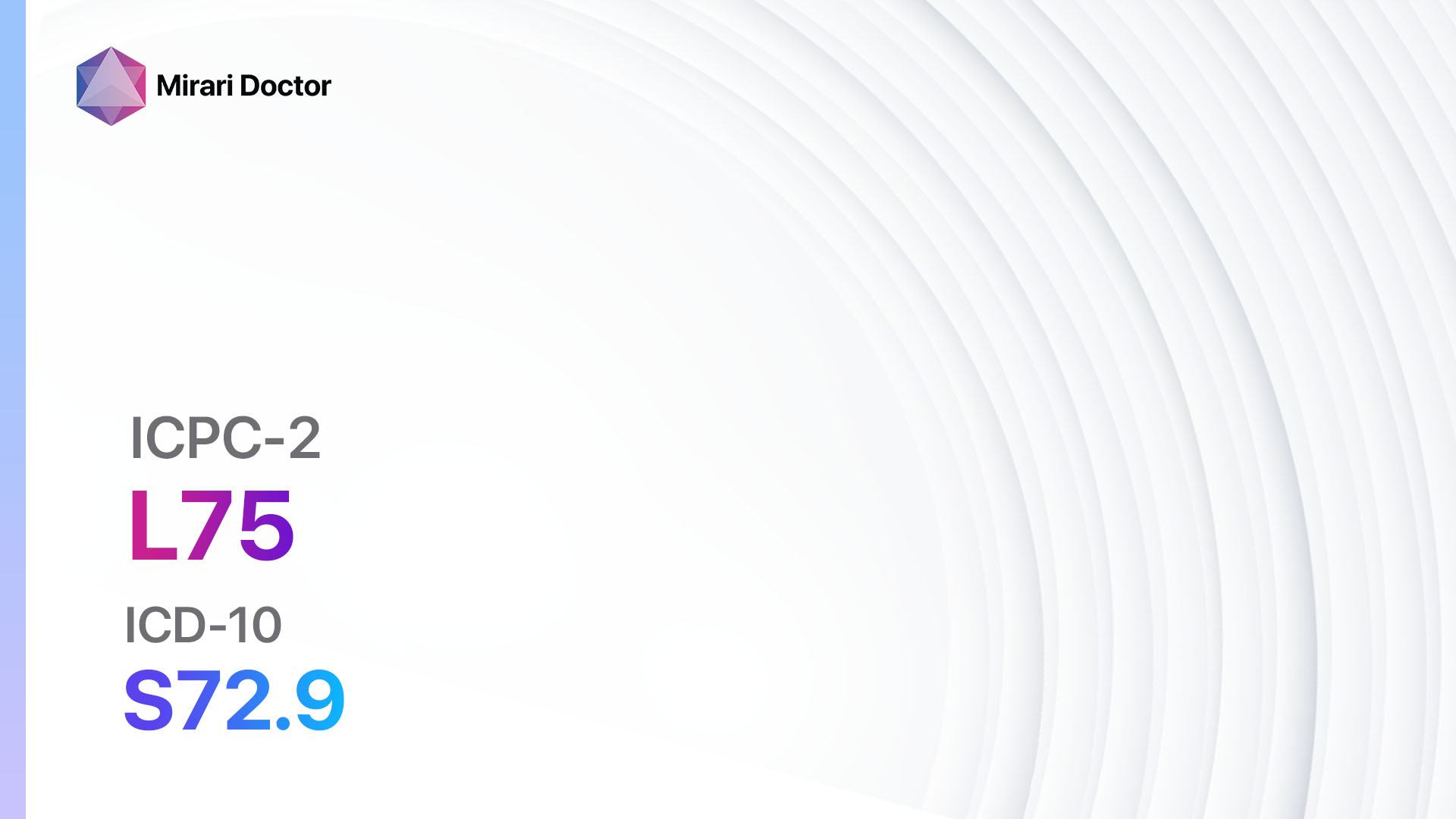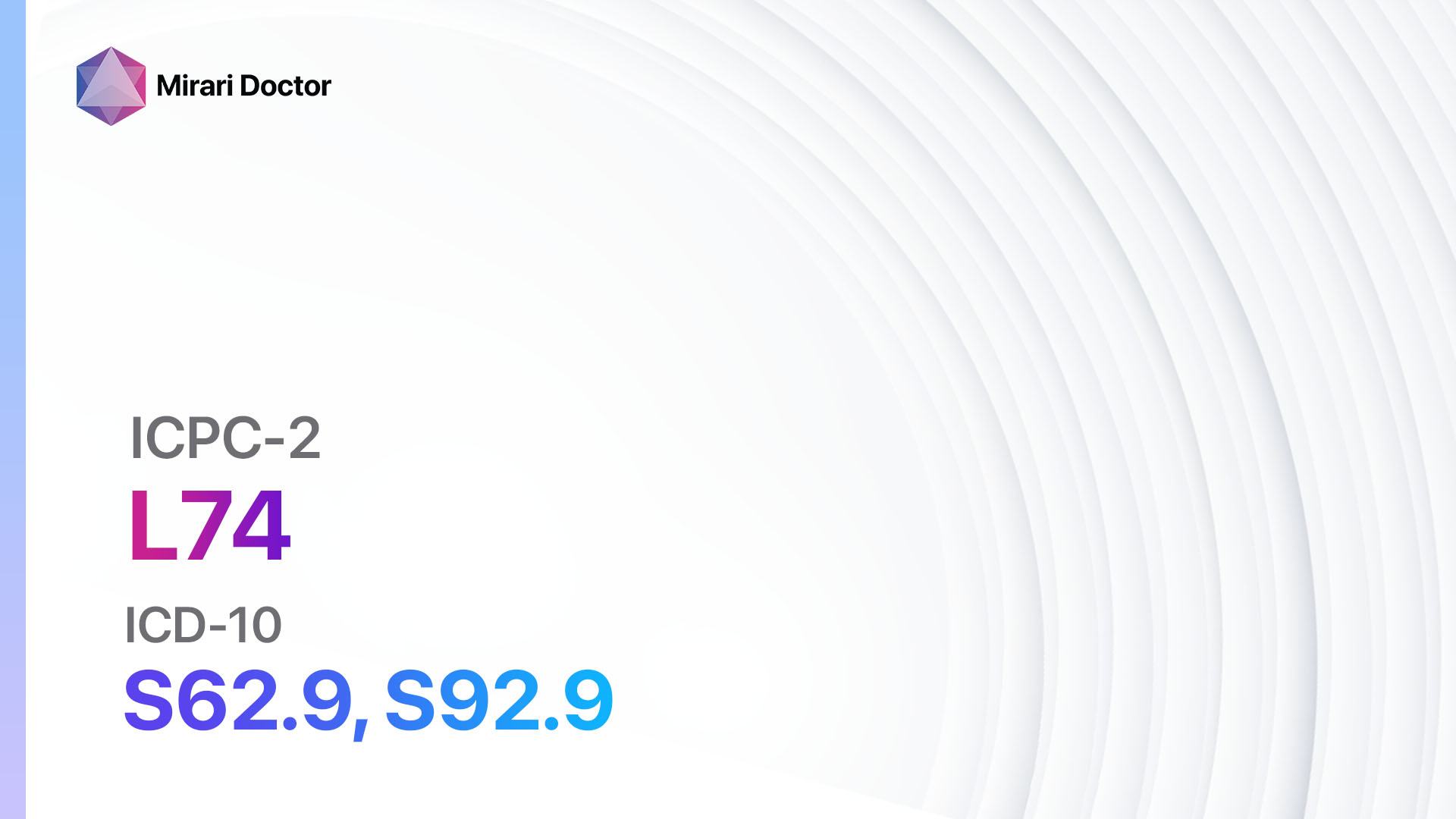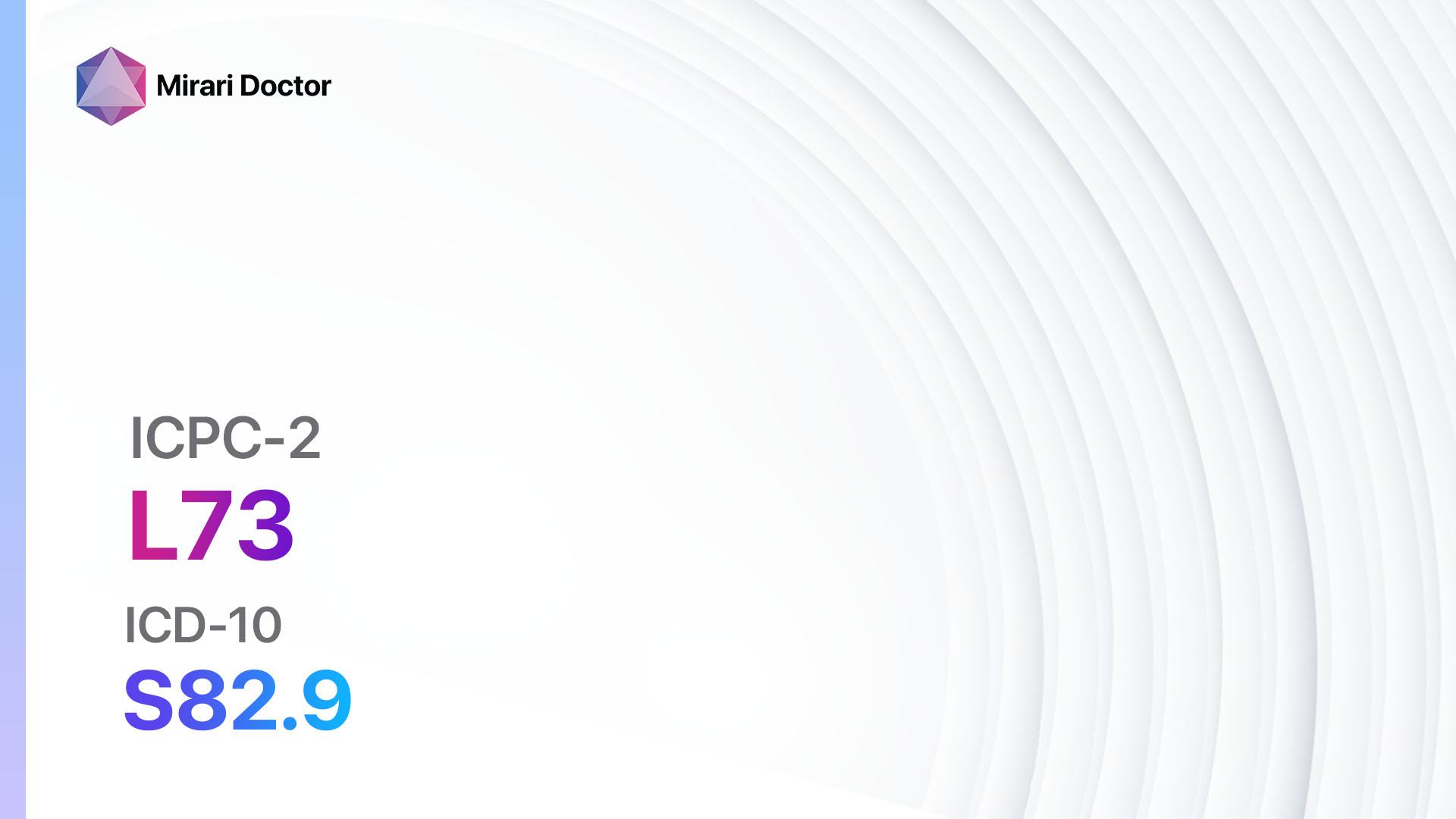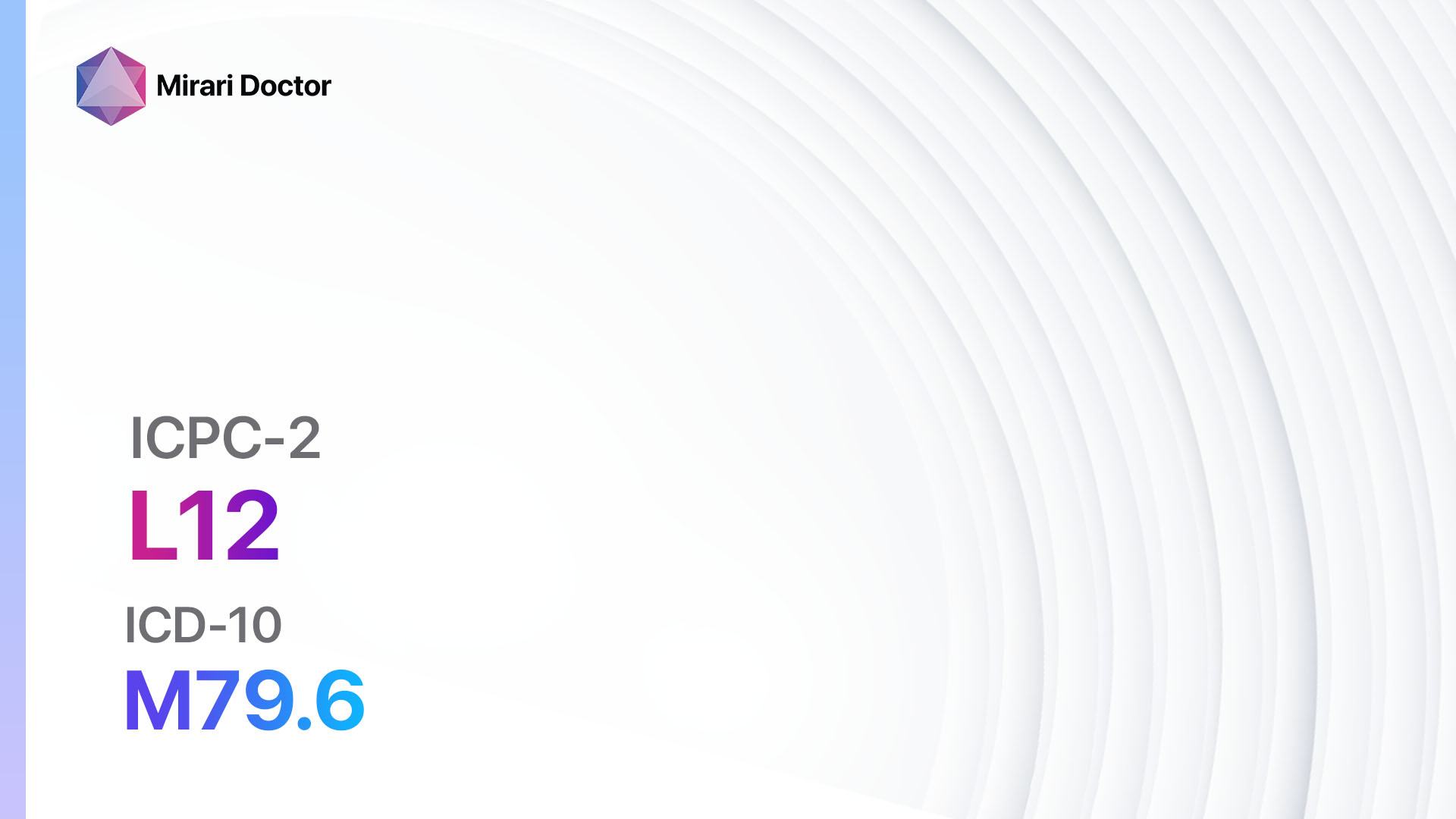
Introduction
Hand and finger symptoms or complaints can be caused by a variety of conditions, including injuries, infections, and underlying medical conditions[1][2]. These symptoms can significantly impact a person’s ability to perform daily activities and should be evaluated and treated appropriately[3]. The aim of this guide is to provide healthcare professionals with a comprehensive approach to diagnosing and managing hand and finger symptoms or complaints.
Codes
Symptoms
- Pain: Patients may experience localized or radiating pain in the hand or fingers[6].
- Swelling: Swelling may be present in the affected hand or fingers[7].
- Stiffness: Patients may have difficulty moving their hand or fingers due to stiffness[8].
- Numbness or tingling: Patients may experience a sensation of numbness or tingling in the hand or fingers[9].
- Weakness: Weakness in the hand or fingers may be present, affecting grip strength and dexterity[10].
- Redness or warmth: The affected hand or fingers may appear red or feel warm to the touch.
Causes
- Trauma: Injuries such as fractures, dislocations, sprains, or strains can cause hand and finger symptoms.
- Infections: Bacterial, viral, or fungal infections can lead to symptoms such as pain, swelling, and redness.
- Inflammatory conditions: Conditions like rheumatoid arthritis, osteoarthritis, or gout can cause hand and finger symptoms.
- Nerve compression: Conditions like carpal tunnel syndrome or ulnar nerve compression can result in hand and finger symptoms.
- Tendinitis: Inflammation of the tendons in the hand or fingers can cause pain and swelling.
- Systemic diseases: Underlying systemic conditions like diabetes or lupus can manifest as hand and finger symptoms.
Diagnostic Steps
Medical History
- Obtain a detailed medical history, including any previous hand or finger injuries, infections, or medical conditions.
- Ask about the onset, duration, and progression of symptoms.
- Inquire about any exacerbating or relieving factors for the symptoms.
- Assess for any associated symptoms, such as joint pain, fever, or rash.
- Determine the patient’s occupation and any repetitive hand movements or activities.
Physical Examination
- Perform a thorough physical examination of the hand and fingers, including inspection, palpation, and range of motion assessment.
- Assess for any deformities, swelling, redness, or warmth.
- Evaluate grip strength and dexterity.
- Test sensation and reflexes in the hand and fingers.
- Check for any signs of infection, such as pus or drainage.
Laboratory Tests
- Complete blood count (CBC): To assess for signs of infection or inflammation.
- Erythrocyte sedimentation rate (ESR) and C-reactive protein (CRP): To evaluate for systemic inflammation.
- Blood glucose levels: To screen for diabetes.
- Rheumatoid factor and anti-cyclic citrullinated peptide (anti-CCP) antibodies: To aid in the diagnosis of rheumatoid arthritis.
- Uric acid levels: To assess for gout.
Diagnostic Imaging
- X-rays: To evaluate for fractures, dislocations, or joint abnormalities.
- Ultrasound: To assess soft tissue structures, such as tendons or ligaments.
- Magnetic resonance imaging (MRI): To visualize detailed images of the hand and fingers, useful for assessing soft tissue injuries or conditions.
- Computed tomography (CT) scan: To provide detailed images of bone structures, useful for evaluating fractures or bony abnormalities.
Other Tests
- Nerve conduction studies: To assess for nerve compression or damage.
- Arthrocentesis: To obtain synovial fluid for analysis in cases of suspected infection or inflammatory conditions.
- Biopsy: In certain cases, a biopsy may be necessary to evaluate for specific conditions, such as tumors or granulomas.
Follow-up and Patient Education
- Schedule follow-up appointments to monitor the patient’s progress and response to treatment.
- Provide education on self-care measures, such as rest, ice, compression, and elevation (RICE) for acute injuries.
- Instruct patients on proper hand and finger exercises to improve strength and flexibility.
- Discuss the importance of maintaining good hand hygiene to prevent infections.
- Educate patients on the signs and symptoms of worsening or recurrent symptoms that require immediate medical attention.
Possible Interventions
Traditional Interventions
Medications:
Top 5 drugs for Hand/finger symptom/complaint:
- Nonsteroidal anti-inflammatory drugs (NSAIDs) (e.g., Ibuprofen, Naproxen):
- Cost: Generic versions can be $3-$20/month.
- Contraindications: Active peptic ulcer disease, history of gastrointestinal bleeding, renal impairment.
- Side effects: Upset stomach, heartburn, dizziness.
- Severe side effects: Gastrointestinal bleeding, kidney damage, allergic reactions.
- Drug interactions: Anticoagulants, corticosteroids, selective serotonin reuptake inhibitors (SSRIs).
- Warning: Prolonged use may increase the risk of cardiovascular events.
- Corticosteroids (e.g., Prednisone, Methylprednisolone):
- Cost: Generic versions can be $4-$30/month.
- Contraindications: Active infections, systemic fungal infections.
- Side effects: Increased appetite, weight gain, mood changes.
- Severe side effects: Adrenal suppression, osteoporosis, increased risk of infections.
- Drug interactions: Nonsteroidal anti-inflammatory drugs (NSAIDs), anticoagulants, antidiabetic medications.
- Warning: Long-term use may require tapering to avoid adrenal insufficiency.
- Antibiotics (e.g., Amoxicillin, Cephalexin):
- Cost: Generic versions can be $4-$30/month.
- Contraindications: Allergy to penicillin or cephalosporins.
- Side effects: Upset stomach, diarrhea, rash.
- Severe side effects: Severe allergic reactions, Clostridium difficile infection.
- Drug interactions: Oral contraceptives, warfarin, methotrexate.
- Warning: Complete the full course of antibiotics as prescribed.
- Disease-modifying antirheumatic drugs (DMARDs) (e.g., Methotrexate, Hydroxychloroquine):
- Cost: Generic versions can be $10-$100/month.
- Contraindications: Active infections, liver disease, pregnancy.
- Side effects: Nausea, hair loss, liver toxicity.
- Severe side effects: Bone marrow suppression, lung toxicity.
- Drug interactions: NSAIDs, live vaccines, alcohol.
- Warning: Regular monitoring of blood counts and liver function is required.
- Opioids (e.g., Oxycodone, Hydrocodone):
- Cost: Generic versions can be $10-$100/month.
- Contraindications: Respiratory depression, acute asthma, paralytic ileus.
- Side effects: Drowsiness, constipation, nausea.
- Severe side effects: Respiratory depression, addiction, overdose.
- Drug interactions: Benzodiazepines, alcohol, sedatives.
- Warning: Use with caution due to the risk of dependence and addiction.
Alternative Drugs:
- Topical analgesics (e.g., Lidocaine patches): Provide localized pain relief. Cost: $10-$50 per patch.
- Muscle relaxants (e.g., Cyclobenzaprine): Useful for relieving muscle spasms. Cost: Generic versions can be $4-$30/month.
- Antidepressants (e.g., Amitriptyline, Duloxetine): Can help with chronic pain management. Cost: Generic versions can be $4-$30/month.
- Anticonvulsants (e.g., Gabapentin, Pregabalin): May be effective for neuropathic pain. Cost: Generic versions can be $4-$30/month.
- Steroid injections: Provide localized anti-inflammatory effects. Cost: $50-$200 per injection.
Surgical Procedures:
- Hand surgery: May be necessary for conditions such as fractures, tendon injuries, or nerve compression. Cost: $5,000 to $20,000.
- Joint replacement: In cases of severe arthritis, joint replacement surgery may be considered. Cost: $15,000 to $50,000.
Alternative Interventions
- Physical therapy: Can help improve hand and finger strength, flexibility, and function. Cost: $50-$150 per session.
- Occupational therapy: Focuses on improving hand and finger function for daily activities. Cost: $50-$150 per session.
- Acupuncture: May provide pain relief and improve blood flow. Cost: $60-$120 per session.
- Chiropractic care: Can help with joint alignment and pain management. Cost: $50-$200 per session.
- Herbal supplements: Some herbal supplements, such as turmeric or ginger, may have anti-inflammatory properties. Cost: Varies depending on the specific supplement.
Lifestyle Interventions
- Rest and immobilization: Adequate rest and immobilization of the hand or fingers can promote healing. Cost: None.
- Heat or cold therapy: Applying heat or cold packs to the affected area can help reduce pain and inflammation. Cost: $10-$30 for packs.
- Hand exercises: Regular hand exercises can improve strength and flexibility. Cost: None.
- Ergonomic modifications: Making ergonomic changes to workstations or tools can reduce strain on the hand and fingers. Cost: Varies depending on the modifications needed.
- Weight management: Maintaining a healthy weight can reduce stress on the hand and fingers. Cost: None.
It is important to note that the cost ranges provided are approximate and may vary depending on the location and availability of the interventions.
Mirari Cold Plasma Alternative Intervention
Understanding Mirari Cold Plasma
- Safe and Non-Invasive Treatment: Mirari Cold Plasma is a safe and non-invasive treatment option for various skin conditions. It does not require incisions, minimizing the risk of scarring, bleeding, or tissue damage.
- Efficient Extraction of Foreign Bodies: Mirari Cold Plasma facilitates the removal of foreign bodies from the skin by degrading and dissociating organic matter, allowing easier access and extraction.
- Pain Reduction and Comfort: Mirari Cold Plasma has a local analgesic effect, providing pain relief during the treatment, making it more comfortable for the patient.
- Reduced Risk of Infection: Mirari Cold Plasma has antimicrobial properties, effectively killing bacteria and reducing the risk of infection.
- Accelerated Healing and Minimal Scarring: Mirari Cold Plasma stimulates wound healing and tissue regeneration, reducing healing time and minimizing the formation of scars.
Mirari Cold Plasma Prescription
Video instructions for using Mirari Cold Plasma Device – L12 Hand/finger symptom/complaint (ICD-10:M79.6)
| Mild | Moderate | Severe |
| Mode setting: 2 (Wound Healing) Location: 0 (Localized) Morning: 15 minutes, Evening: 15 minutes |
Mode setting: 2 (Wound Healing) Location: 0 (Localized) Morning: 30 minutes, Lunch: 30 minutes, Evening: 30 minutes |
Mode setting: 2 (Wound Healing) Location: 0 (Localized) Morning: 30 minutes, Lunch: 30 minutes, Evening: 30 minutes |
| Mode setting: 9 (Arthritis) Location: 0 (Localized) Morning: 15 minutes, Evening: 15 minutes |
Mode setting: 9 (Arthritis) Location: 0 (Localized) Morning: 30 minutes, Lunch: 30 minutes, Evening: 30 minutes |
Mode setting: 9 (Arthritis) Location: 0 (Localized) Morning: 30 minutes, Lunch: 30 minutes, Evening: 30 minutes |
| Mode setting: 7 (Immunotherapy) Location: 1 (Sacrum) Morning: 15 minutes, Evening: 15 minutes |
Mode setting: 7 (Immunotherapy) Location: 1 (Sacrum) Morning: 30 minutes, Lunch: 30 minutes, Evening: 30 minutes |
Mode setting: 7 (Immunotherapy) Location: 1 (Sacrum) Morning: 30 minutes, Lunch: 30 minutes, Evening: 30 minutes |
| Total Morning: 45 minutes approx. $7.50 USD, Evening: 45 minutes approx. $7.50 USD |
Total Morning: 90 minutes approx. $15 USD, Lunch: 90 minutes approx. $15 USD, Evening: 90 minutes approx. $15 USD, |
Total Morning: 90 minutes approx. $15 USD, Lunch: 90 minutes approx. $15 USD, Evening: 90 minutes approx. $15 USD, |
| Usual treatment for 7-60 days approx. $105 USD – $900 USD | Usual treatment for 6-8 weeks approx. $1,890 USD – $2,520 USD |
Usual treatment for 3-6 months approx. $4,050 USD – $8,100 USD
|
 |
|
Use the Mirari Cold Plasma device to treat Hand/finger symptom/complaint effectively.
WARNING: MIRARI COLD PLASMA IS DESIGNED FOR THE HUMAN BODY WITHOUT ANY ARTIFICIAL OR THIRD PARTY PRODUCTS. USE OF OTHER PRODUCTS IN COMBINATION WITH MIRARI COLD PLASMA MAY CAUSE UNPREDICTABLE EFFECTS, HARM OR INJURY. PLEASE CONSULT A MEDICAL PROFESSIONAL BEFORE COMBINING ANY OTHER PRODUCTS WITH USE OF MIRARI.
Step 1: Cleanse the Skin
- Start by cleaning the affected area of the skin with a gentle cleanser or mild soap and water. Gently pat the area dry with a clean towel.
Step 2: Prepare the Mirari Cold Plasma device
- Ensure that the Mirari Cold Plasma device is fully charged or has fresh batteries as per the manufacturer’s instructions. Make sure the device is clean and in good working condition.
- Switch on the Mirari device using the power button or by following the specific instructions provided with the device.
- Some Mirari devices may have adjustable settings for intensity or treatment duration. Follow the manufacturer’s instructions to select the appropriate settings based on your needs and the recommended guidelines.
Step 3: Apply the Device
- Place the Mirari device in direct contact with the affected area of the skin. Gently glide or hold the device over the skin surface, ensuring even coverage of the area experiencing.
- Slowly move the Mirari device in a circular motion or follow a specific pattern as indicated in the user manual. This helps ensure thorough treatment coverage.
Step 4: Monitor and Assess:
- Keep track of your progress and evaluate the effectiveness of the Mirari device in managing your Hand/finger symptom/complaint. If you have any concerns or notice any adverse reactions, consult with your health care professional.
Note
This guide is for informational purposes only and should not replace the advice of a medical professional. Always consult with your healthcare provider or a qualified medical professional for personal advice, diagnosis, or treatment. Do not solely rely on the information presented here for decisions about your health. Use of this information is at your own risk. The authors of this guide, nor any associated entities or platforms, are not responsible for any potential adverse effects or outcomes based on the content.
Mirari Cold Plasma System Disclaimer
- Purpose: The Mirari Cold Plasma System is a Class 2 medical device designed for use by trained healthcare professionals. It is registered for use in Thailand and Vietnam. It is not intended for use outside of these locations.
- Informational Use: The content and information provided with the device are for educational and informational purposes only. They are not a substitute for professional medical advice or care.
- Variable Outcomes: While the device is approved for specific uses, individual outcomes can differ. We do not assert or guarantee specific medical outcomes.
- Consultation: Prior to utilizing the device or making decisions based on its content, it is essential to consult with a Certified Mirari Tele-Therapist and your medical healthcare provider regarding specific protocols.
- Liability: By using this device, users are acknowledging and accepting all potential risks. Neither the manufacturer nor the distributor will be held accountable for any adverse reactions, injuries, or damages stemming from its use.
- Geographical Availability: This device has received approval for designated purposes by the Thai and Vietnam FDA. As of now, outside of Thailand and Vietnam, the Mirari Cold Plasma System is not available for purchase or use.
References
- Pellekooren, D. P., et al. (2023). Appendix I. Included ICPC codes. Pain, 164(7), 1-12.
- Cleveland Clinic. (2021). Arthritis of the Hand: Symptoms, Types & Treatments. Cleveland Clinic.
- Durand, D. (n.d.). Diagnose your hand problem. Dr Durand Hand Surgeon Montreal.
- RxReasoner. (n.d.). ICPC-2 Chapter: L Musculoskeletal. RxReasoner.
- ICD-10-CM. (2018). M79.6 – Pain in limb, hand, foot, fingers and toes. ICD-10-CM.
- Healthline. (n.d.). Finger Pain: 15 Causes, Types, Diagnosis & Treatment. Healthline.
- MedicalNewsToday. (n.d.). Finger pain: Causes, treatment, and self-care. MedicalNewsToday.
- MyHealth Alberta. (n.d.). Finger, Hand, and Wrist Problems, Non-Injury. MyHealth Alberta.
- Johns Hopkins Medicine. (n.d.). Hand Pain and Problems. Johns Hopkins Medicine.
- WebMD. (n.d.). Why Does My Hand Hurt? 5 Causes of Hand and Wrist Pain. WebMD.
Related articles
Made in USA


